National Museum of the Pacific War
A World Class Travel Destination
Article Date: June, 2013
Article and Photography by Mark Quasius
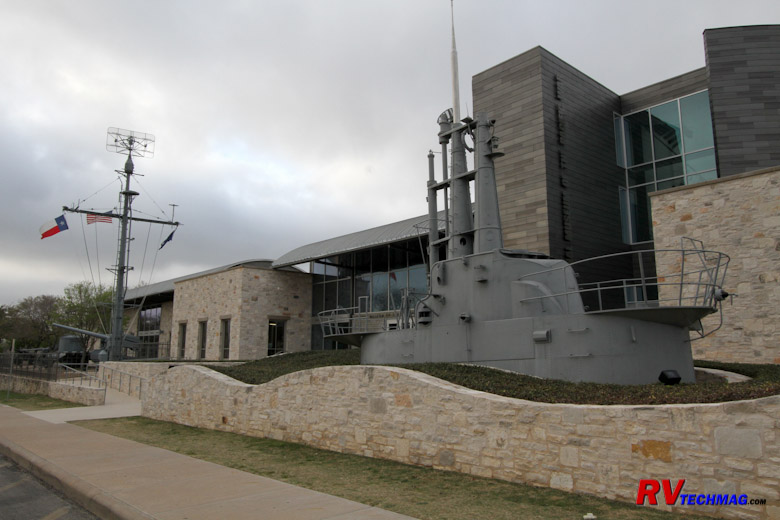
World War II was one of the defining times in America's history. The Pacific Theater of Operations contained the longest
and hardest fought battles. From the lows of the attack on Pearl Harbor and Japan's invasion of the Philippines to the highs of victories during
America's island-hopping campaign and the eventual surrender of Japan, the Pacific War was a pivotal moment in America's history. The islands
where these battles took place were spread across the vast expanse of the Pacific Ocean so the air, land, and sea campaign heavily depended on
the Navy for transportation and support. The command of these naval forces went to Admiral Chester Nimitz. Admiral Nimitz grew up in
Fredericksburg, deep in the Texas Hill country, far from any sizeable body of water. Yet, he was accepted to the U.S. Naval Academy at the age
of 15 and was chosen by President Roosevelt to lead the Navy's Pacific fleet after the attack on Pearl Harbor. Therefore, the chosen site for
the National Museum of the Pacific War Museum was then in its commander's home town of Fredericksburg, Texas.
Location
The Pacific War Museum is really more than just a museum. It's a campus of various buildings and areas devoted to the
Pacific War. The main museum is the George H.W. Bush gallery and is flanked by the Admiral Nimitz Museum, Pacific Combat Zone, Plaza of
Presidents, Japanese Garden of Peace, the Memorial Courtyard, and a new Nimitz Education & Research Center. The entire 6-acre site is fully
handicap-accessible and admission is free to any World War II veterans. The site is located right in downtown Fredericksburg, which is in the
heart of Hill Country and surrounded by peach orchards. It's easy to spot as it's the only building with a submarine conning tower out front
and surrounded by naval gun displays.
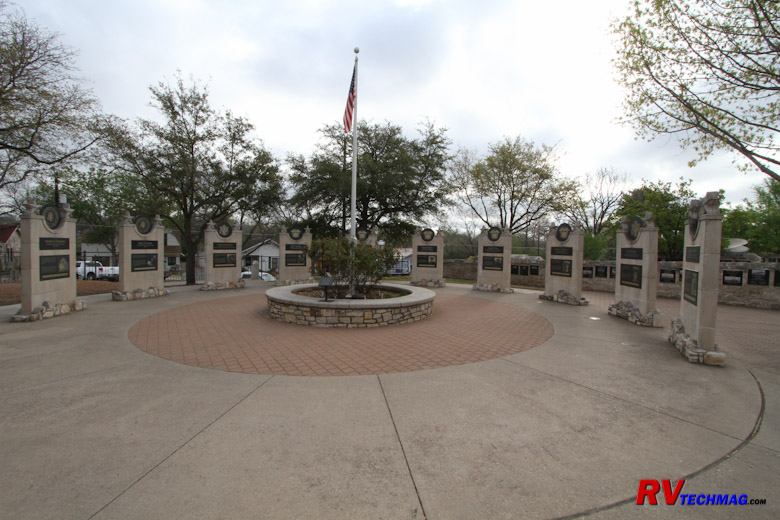
The Hall of Presidents is located next to the Memorial Courtyard and features engraved placards describing each
president's military service during World War II.
George Bush Gallery
|
Any visit begins at the 33,000-square-foot George H.W. Bush gallery, named after our president who flew a TBM Avenger
torpedo bomber during the war. Its interpretive story begins with Japan's political background and aspirations to empire, as well as the events
leading up to war. It then takes you through the Pearl Harbor attack on December 7, 1941, and America's entry into the war. One of the four
Japanese submarines that participated in that attack is on display, along with a door from the USS Arizona and other artifacts from that fateful
day. The Doolittle Raid on Tokyo is well represented with a restored B-25. Aircraft and land force weaponry are on display as your tour takes
you through the various events of the island-hopping campaign, including the Bataan Death March. The tour ends with an exhibit covering the
Hiroshima and Nagasaki atomic bombs, as well as the horrific cost of victory in both lives and material.
|
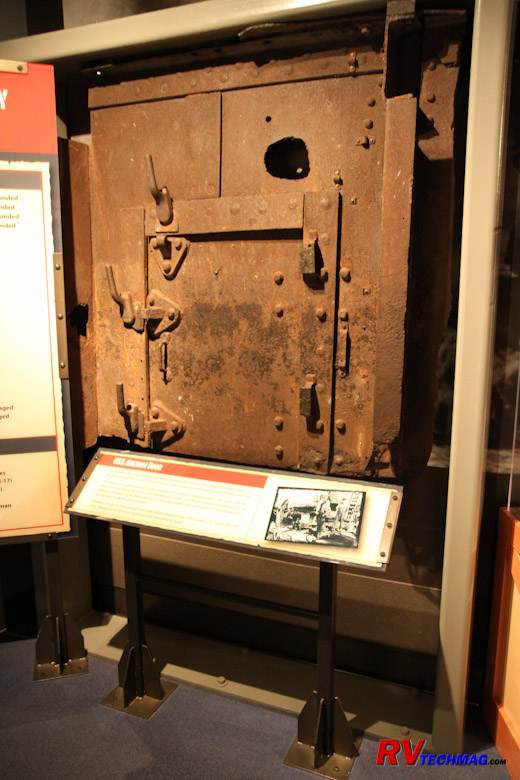
This compartment door was from the superstructure of the USS Arizona, which was sunk at Pearl Harbor. The
cutting torch hole was made when looking for survivors.
|
Admiral Nimitz Museum
The main gallery is located next to the Admiral Nimitz Museum, which is the historic Nimitz Hotel that his grand-father owned
and where Admiral Nimitz was born and raised in the late 1800s. It chronicles his life and history from his first command of the U.S. Decatur as
an ensign (which interestingly enough he ran aground and was court martialed for) to the dedication of the new Nimitz class super carriers. A
15-foot model of the USS Nimitz is on display here, as well.
|
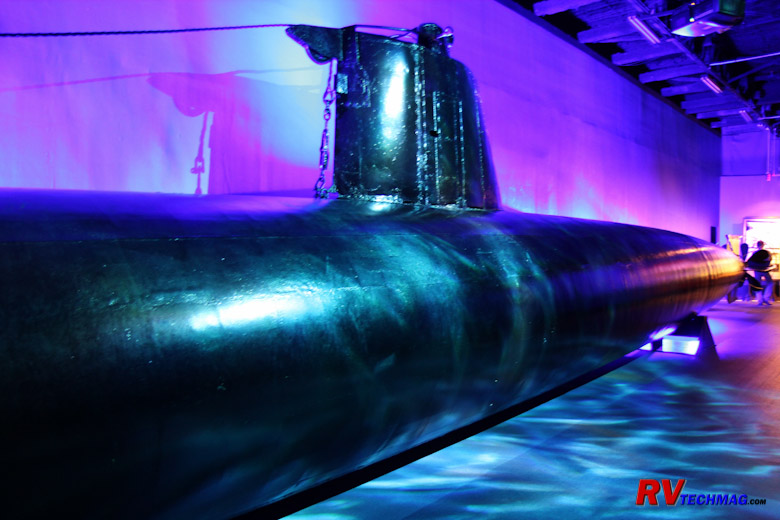
This is the sole surviving Japanese mini-sub that took part in the attack on Pearl Harbor.
It ran aground when its gyrocompass failed. The pilot was America's first prisoner of war.
|
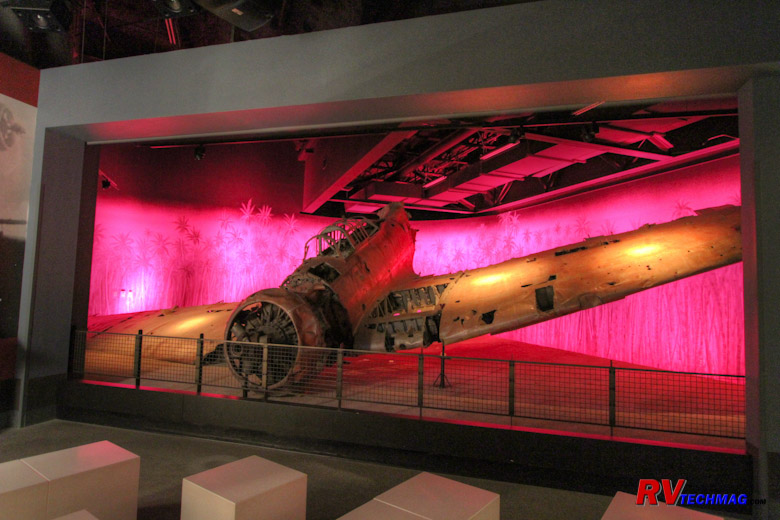
This Japanese Val dive-bomber was shot down during the attack.
|
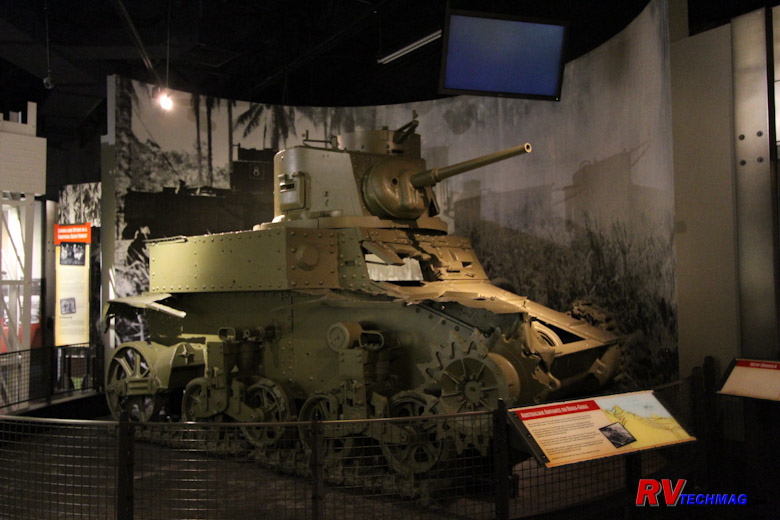
A Japanese anti-tank gun took out this M3 Stuart light tank. A video interview with the tank
commander describes the actual encounter in detail. The actual anti-tank gun that destroyed the tank is located across
the hallway.
|
|
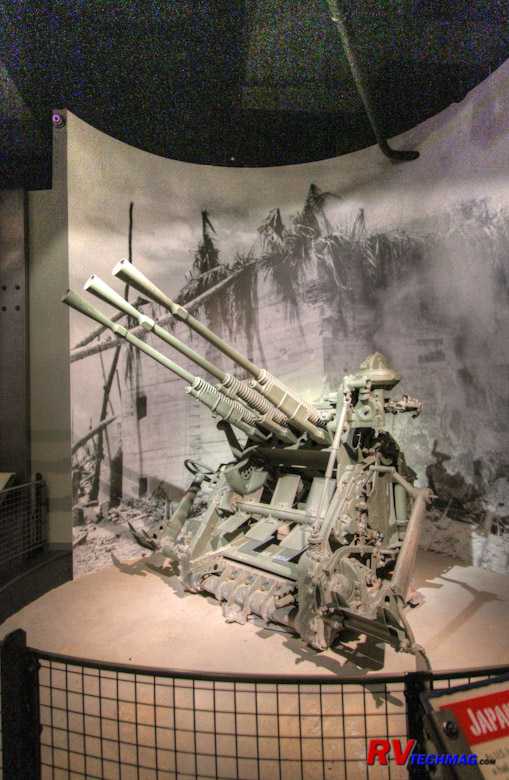
This Japanese three-barrel anti-aircraft gun is typical of the many artifacts on display in the museum.
|
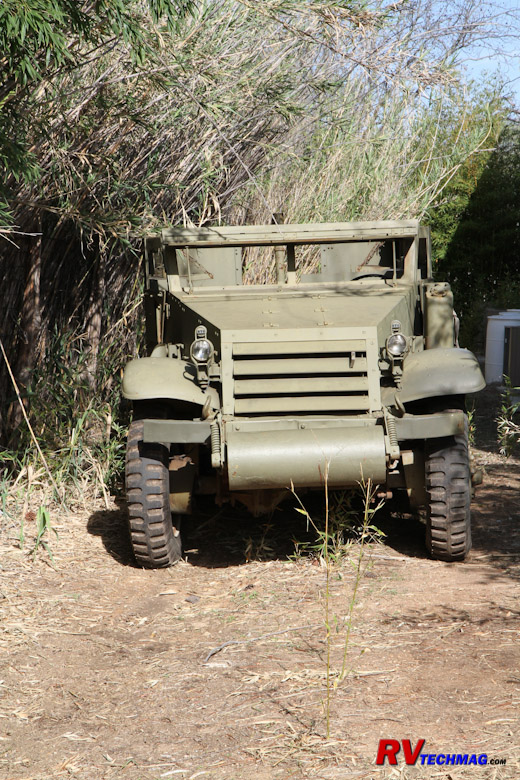
An M3A Halftrack sits in the brush, waiting for use in the Tarawa assault.
|
|
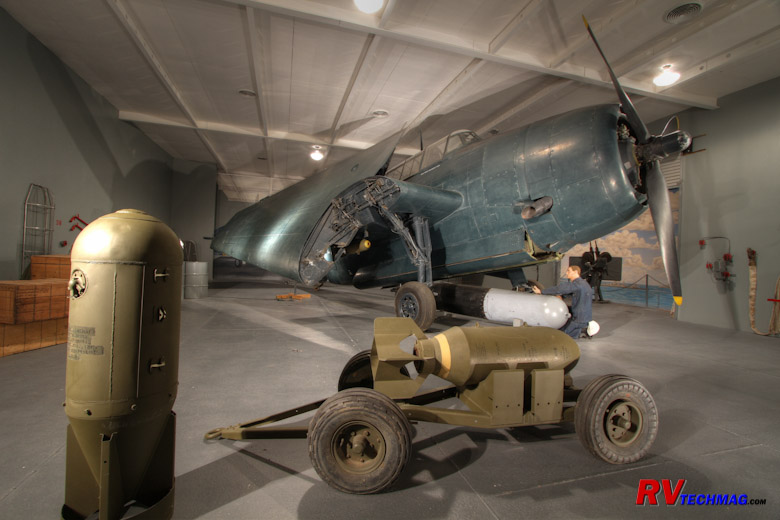
This TBM Avenger torpedo bomber is seen being readied for its next mission in a carrier hangar deck
setting. It is similar to the plane that President George H.W. Bush flew during the war.
|
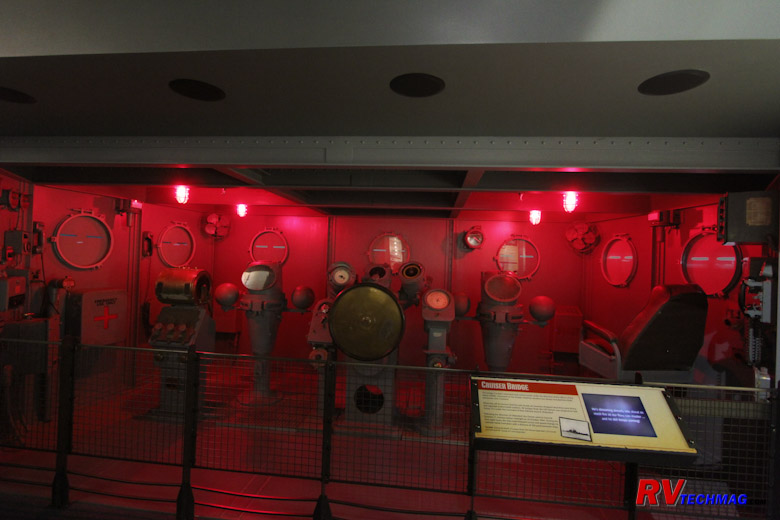
An actual bridge from a Heavy Cruiser is set in a night battle scene in one of the naval exhibits.
|
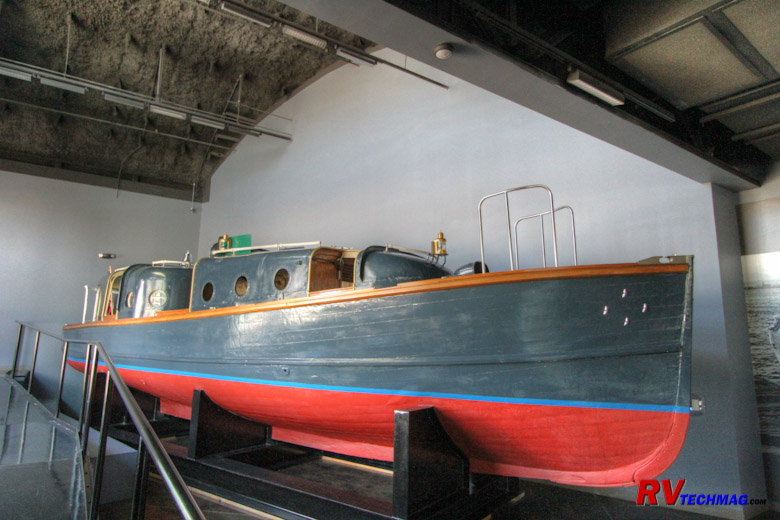
An admiral's barge was used to transport Admiral Nimitz between ships and shore. The four stars on
the bow indicate Admiral Nimitz's rank.
|
Japanese Garden of Peace and Plaza of Presidents
The Garden of Peace is a gift from the military leaders of Japan to the people of the United States to honor Admiral
Nimitz. It's a traditional Japanese garden featuring stone, water, and plants. It's an exact replica of Admiral Togo's garden in Japan and was
built there, disassembled, shipped to the United States, and reassembled by the same Japanese craftsmen who built Admiral Togo's meditation
center in his garden in Japan. It's a gift from the people of Japan with prayers for everlasting peace and goodwill between our two countries
and thanksgiving for the fair treatment that Admiral Nimitz conferred upon Japan after their surrender. The adjoining Plaza of Presidents
features commemorative monuments, plaques, and details regarding the 10 American presidents who served in the armed forces during World War II.
Pacific Combat Zone
Of course, no trip to the museum would be complete without a visit to the Pacific Combat Zone, just a short walk down the
road. Guided tours through this area begin in a large building with a recreation of an aircraft carrier's hangar deck and a TBM Avenger being
readied for a strike. Another area contains a dock with the only remaining restored PT boat, the PT-309, which served in the Pacific during
World War II. Exiting the building takes you to an outdoor battle scene. This area was modeled after the Japanese defenses at Tarawa and features
gun emplacements, anti-aircraft guns, tanks, entrenchments and pillboxes. A reenactment occurs several times a year where Marines land with
an LVT amphibious troop carrier and Stuart tank to storm these defenses. Black soot on the pillbox from the flamethrower gives evidence of the
realism of these reenactments. After a tour of the battlefield, you will enter a Quonset hut that is set up exactly as a World War II field
hospital and you will learn more about the level of medical attention available at that time.
|
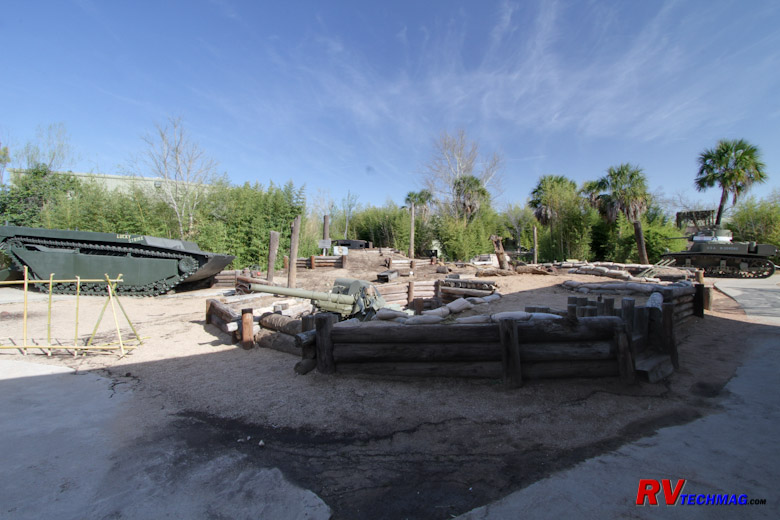
The Pacific Combat Zone features a large outside arena with a recreation of a typical Japanese defensive
position on Tarawa.
|
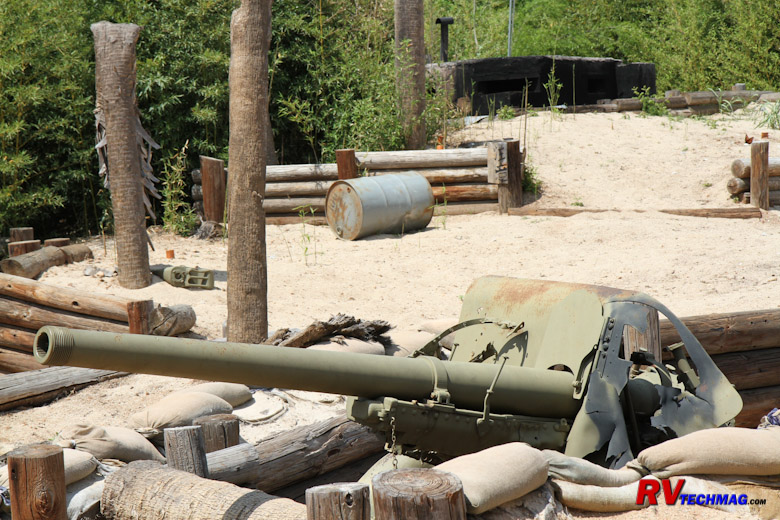
Various reenactments of the Tarawa invasion are held each year, with the highlight being the flamethrower assault on
the pillbox near the rear of the fortification.
|
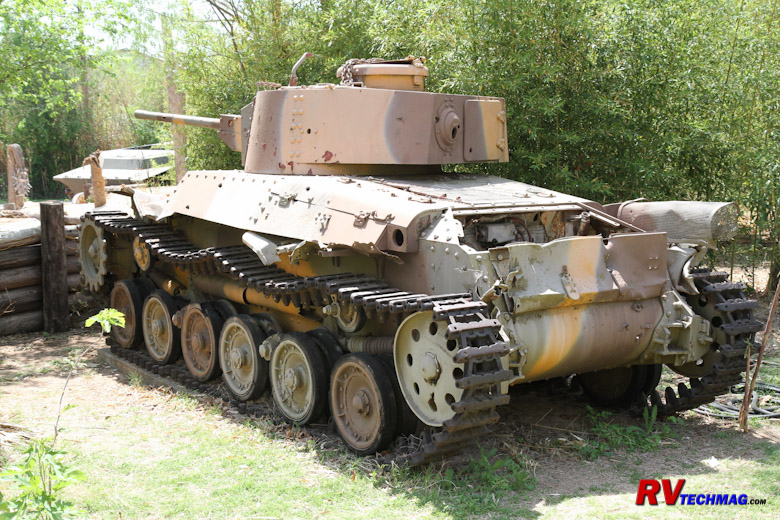
A Japanese Che-Ni tank is placed behind revetments in the Pacific Combat Zone.
|
|
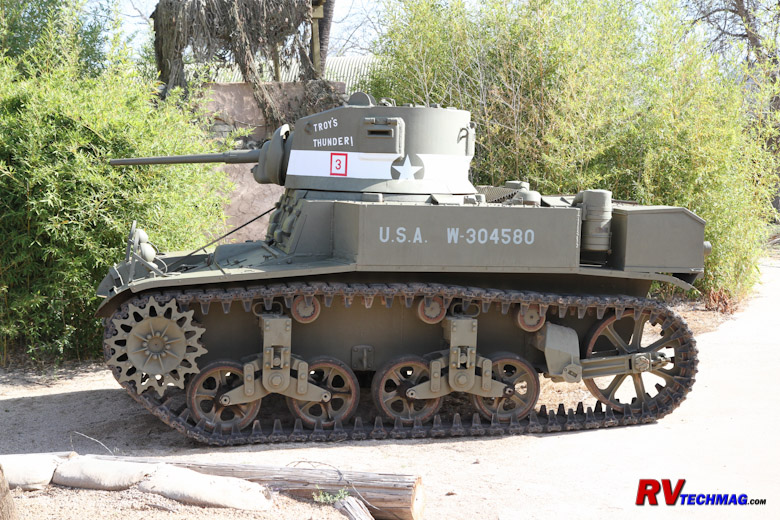
An M3 Stuart light tank is one of the vehicles used during the invasion reenactments.
|
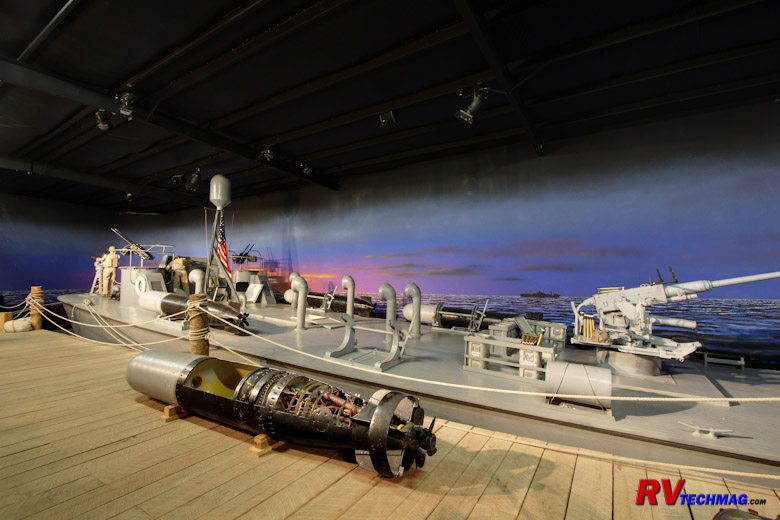
The PT-309 is the last remaining PT boat used in World War II combat. It's on display in a climate-controlled
building at the museum.
|
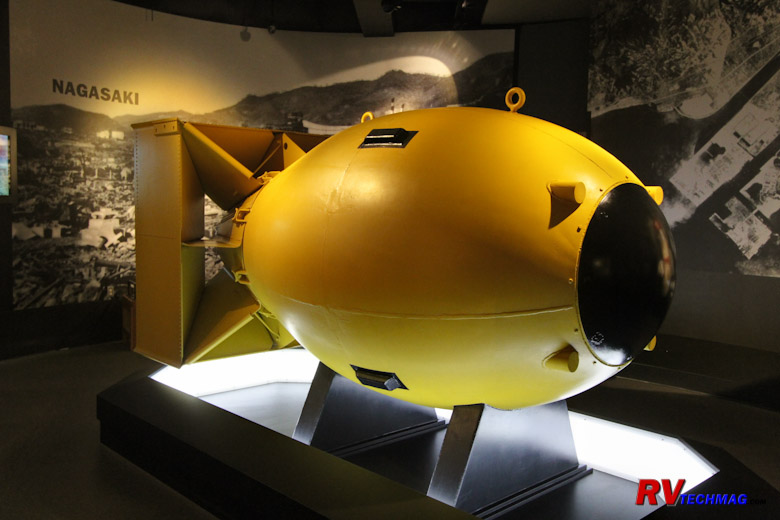
Five atomic bombs were prepared near the end of the war. Had the Japanese not surrendered after
the second bomb hit Nagasaki, this casing would have been used in another bombing mission.
|
Research Center and Gift Shop
The main gallery's lobby area contains a large gift shop containing souvenirs and related hobby crafts and models, as
well as a large collection of books and media relating to the Pacific War.
A new research center has been established with an extensive collection of documents and photos pertaining to the
Pacific War. More than 3,700 recorded interviews with veterans are on file and help to create the most comprehensive collection of information
for anyone performing research on the Pacific War.
The Texas Hill Country has much to offer, and RV owners frequently choose this area as a destination. If you're traveling
to this area, the Pacific War Museum should be added to your bucket list. The visit will be entertaining and informative and will give you a
greater appreciation for what America accomplished to overcome those trials and bring an end to that war.
Source
National Museum of the Pacific War
(830) 997-8600
www.pacificwarmuseum.org
Return to Home Page
If you enjoyed this article be sure to recommend RVtechMag.com to your friends, like us on Facebook or Twitter
or subscribe to our RSS feed.



|





















